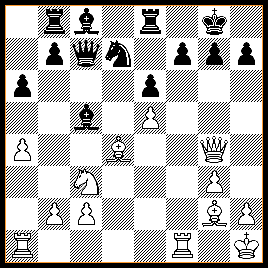Book Reviews by Sam Collins
 Extreme apologies for my late follow-up to my previous review; scholastic and chess commitments have held me away from my electronic quill. However, I hope to partially compensate by reviewing two (yes, two) books now. Extreme apologies for my late follow-up to my previous review; scholastic and chess commitments have held me away from my electronic quill. However, I hope to partially compensate by reviewing two (yes, two) books now.
To begin with the lighter of the two books, we have The Human Comedy of Chess: A Grandmaster’s Chronicles by GM Hans Ree (Russel Enterprises Inc., R.R.P. $24.95, 334 pages). This isn’t a chess book in the conventional sense; readers searching for an explanation of the Lucena position or an exposition of the 8.Rb1 Gruenfeld will come away empty-handed. Instead they will find a collection of articles by Hans Ree, a prominent Dutch player and journalist, where he discusses chess stories rather than games (something like Mig).
So, what’s the book like? Well, it is certainly entertaining, and Ree has a very nice command of language, which helps the stories to flow. He sometimes exaggerates, which is quite annoying. For instance, in his article ‘Obscene Violence’, which mainly concerns itself with slating Dominic Lawson’s (excellent, in my opinion) book, ‘The Inner Game’, he claims that no examples of mature behaviour from Short are given. Well, what about dividing his preparation time between America and Greece, so he could spend time with his family, or his remarkably calm reaction when he found that his opening preparation had been leaked.
There are few games, and those that are given are very lightly annotated. The book wasn’t particularly to my tastes, as I like my chess books to have some chess in them, but for those who want to read about modern chess trivia from someone who has rubbed shoulders with the good, the bad and the ugly, this is a well-written, entertaining effort.
My assessment: * * *
We now move on to Storming the Barricades by GM Larry Christiansen (Gambit Publications, R.R.P. £13.99, 174 pages).
Any ‘Inside Chess’ reader will be familiar with Larry Christiansen’s entertaining and instructive articles on the theme of attacking play. I have certainly enjoyed his previous work, and so was looking forward to reading this book. And there are many things in this book worth looking forward to. The first chapter, ‘Evolution of an Attacking Player’, is a witty and very enjoyable account of his chess career, charting his rise from promising American junior to Linares 1981 prize-winner (though doesn’t talk about anything after that, bizarrely). The games in the book are all entertaining and well-chosen, and Christiansen’s tactical mastery comes across very well in the notes. I particularly like the part where he writes down his thoughts on being given a promising attacking position to analyse:
Hamdouchi-Lautier Cap d’Agde 1994

White has a formidable attacking position. All of his pieces are actively engaged (even the rook on a1 because it is connected with its twin on f1) and ready to strike. The open f-file invites various attacking schemes and the spearhead pawn on e5 imposes a nice cramp on the centre and kingside. Black’s development is backward and his king waits impatiently for ...Nf8 to secure the fortress. The key to successful attacking play is striking decisively at the right moment. If White continues with the mechanical 17 Rae1, Black should be able to unravel his queenside and simplify with 17...Bxd4 18 Qxd4 b5. 17 Qf4 achieves little after 17...Rf8. Of course, the attacker must look for a much more violent method to keep Black off balance. The open f-file is a convenient avenue of destruction, and a move to be considered is 17 Rxf7. Black must capture with 17...Kxf7, and then White can explore further possibilities.
He then analyses the position out to a win for White, still explaining his thoughts during the course of the analysis. Although this passage is somewhat manufactured and probably not an exact model of how a grandmaster would think, it is still fantastically instructive. However, the book has its problems.
Although Christiansen presents numerous games under different headings, he seems unable to draw general conclusions or formulate general principles on the basis of the games chosen. They thus seem rather isolated and unrelated. I would have liked to see many more Christianson games, or the type of assessment shown above. The last chapter, containing his favourite attacking games, have notes, which are nothing more than a re-hash of old Informator notes.
All in all, a rather disappointing effort from Christiansen, which is competent, but could have been excellent with a little more thought and effort.
My assessment: * * *
Other reviews by Sam Collins
Review 1: Play the Open Games as Black, by John Emms
Review 2: The Human Comedy of Chess: A Grandmaster’s Chronicles by GM Hans Ree & Storming the Barricades by GM Larry Christiansen
Review 3: Open Ruy Lopez by Glenn Flear
Review 4: Main Line Caro-Kann by Neil McDonald
Review 5: Offbeat Spanish by Glenn Flear
Review 6: Excelling at Chess by Jacob Aagard
Review 7: Can You Be a Positional Chess Genius? by Angus Dunnington
Review 8: The Grunfeld Defence by Nigel Davies
Review 9: The Best of Chess Cafe
Review 10: How To Build Your Chess Opening Repertoire by Steve Giddins
Review 11: The …a6 Slav by Glenn Flear
Review 12: Starting Out: The Ruy Lopez by John Shaw
Review 13: Knockout Nimzo (video) by Tony Kosten
Review 14: My Great Predecessors by Gary Kasparov
|


